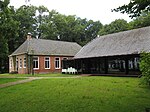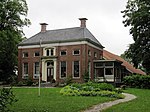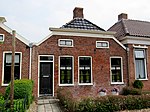Bellingwedde
Former municipalities of Groningen (province)Municipalities of the Netherlands disestablished in 2018Pages including recorded pronunciationsPages with Dutch IPAPages with non-numeric formatnum arguments ... and 1 more
Westerwolde (municipality)

Bellingwedde (Dutch pronunciation: [ˌbɛlɪŋˈʋɛdə] ) was a municipality with a population of data missing in the province Groningen in the northeast of the Netherlands. Bellingwedde was established in 1968, when the municipalities of Bellingwolde and Wedde had merged. It contained the villages Bellingwolde, Blijham, Oudeschans, Veelerveen, Vriescheloo, and Wedde. After almost 50 year, Bellingwedde was disestablished in 2018, when the municipalities of Bellingwedde and Vlagtwedde had merged into Westerwolde.
Excerpt from the Wikipedia article Bellingwedde (License: CC BY-SA 3.0, Authors, Images).Bellingwedde
Tweekarspelenweg, Westerwolde
Geographical coordinates (GPS) Address Nearby Places Show on map
Geographical coordinates (GPS)
| Latitude | Longitude |
|---|---|
| N 53.116666666667 ° | E 7.15 ° |
Address
Tweekarspelenweg
Tweekarspelenweg
9695 AE Westerwolde
Groningen, Netherlands
Open on Google Maps










